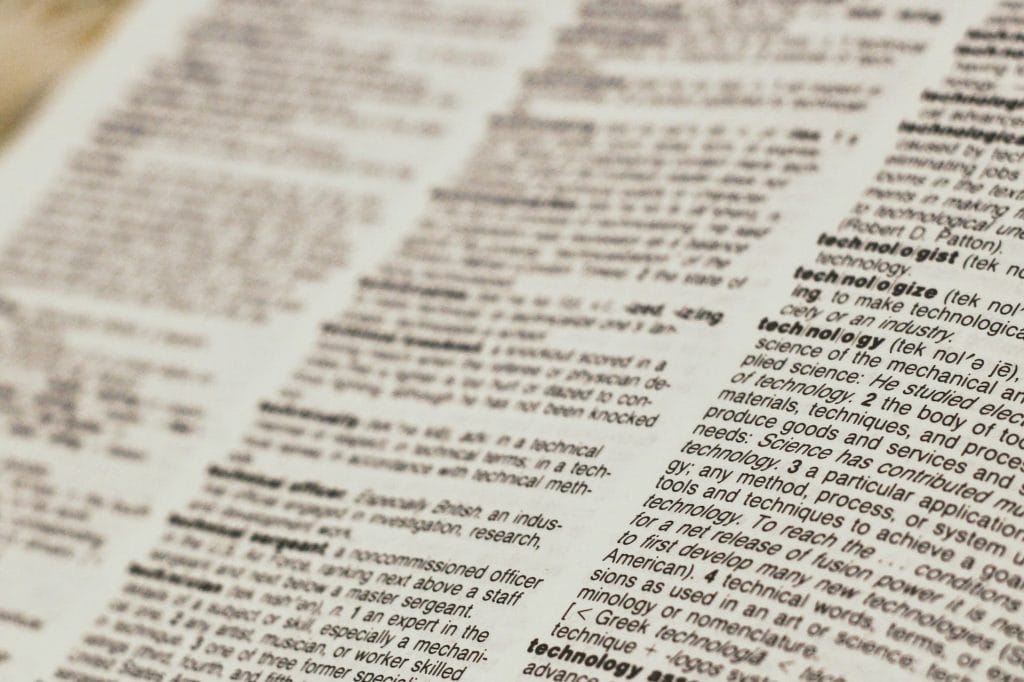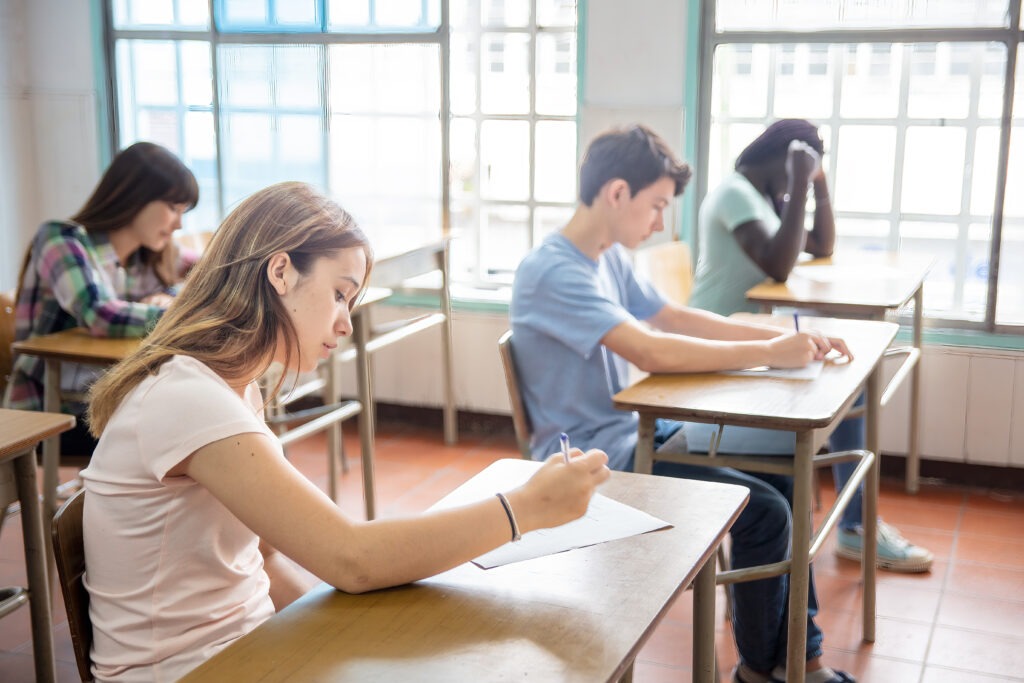What will your child be learning in Year 10 English?
If you’re looking for information about Australia’s Year 10 English Syllabus, you’ve come to the right place!
We’re here to help you gain a better understanding of the curriculum with a brief run-down of its key learning areas, achievement standards, and some sample portfolios of what your child should be able to produce by the end of the year.
Let’s get started!
What do students learn in the Year 10 Australian English Curriculum?
Assessment Types in Year 10 English
Year 10 English Achievement Standards
Looking for English guides for other year groups?
If you have a child in a different year group to Year 10, we’ve also got English guides for them! Check out our guides for the various year groups:
Year 1 | Year 2 | Year 3 | Year 4 | Year 5 | Year 6 | Year 7 | Year 8 | Year 9
What do students learn in the Year 10 Australian English Curriculum?
Australia’s Year 10 English Curriculum consists of three main learning areas:
- Language
- Literature
- Literacy
These three strands form fundamental building blocks for your child’s English learning journey. Students will strengthen listening, reading, viewing, speaking, writing and creating skills from earlier years by engaging with a variety of texts in familiar and unfamiliar contexts.
They will explore complex plot sequences, themes, text structures, and language features to develop their critical understanding and analysis. Whether it be through classic or contemporary literature, or multimodal and media texts, this curriculum is designed to strengthen your child as an independent reader.
If you haven’t heard yet, the Years 7-10 Maths Curriculum is also going to look different in 2024, so make sure you’re on top of it!
Language
The Language learning area focusses on areas of language variation and change, language for interaction, text structure and organisation, and expressing and developing ideas.
Language variation and change
To begin with, students will learn about the history of Standard Australian English and investigate the differences between spoken and written English.
Language for interaction
Students will also learn the social effects of language to empower or disempower people by identifying language that aligns the listener and reader, and the use of first and second person pronouns.
They will also learn how to identify references to shared assumptions and shared cultural knowledge, as well as reflect on the inclusionary and exclusionary effects of language. Your child will also learn how to evaluate texts in light of their historical context and consider varying points of view and value systems.
Text structure and organisation
Your child will also comparatively investigate the purposes, text structures and language features of traditional and contemporary in different media to explore how adaptations for texts on online environments are influenced by technological affordances.
They will also experiment with arranging images and paragraphs for different purposes, such as the production of documentaries, media reports, online magazines and digital books. Additionally, students will also learn citing conventions for essays, reviews, and academic assignments.
Expressing and developing ideas
Teachers will support children with expressing and developing ideas by helping them to analyse and evaluate the effectiveness of sentence and clause structure. This includes looking at how clauses change emphasis, the focus of a sentence through passive voice, verbless clauses, and sentences beginning with a coordinating clause.
Alongside this, students will learn to analyse high order concepts through language techniques, including how normalisation affects event construction, clause combination to communicate logical relations between ideas, technicality for shared knowledge, and abstraction to allow greater generalisation.
Students will evaluate the impact of still and moving images on audiences by experimenting with movement and light. Additionally, students will define their vocabulary choices to create texts with symbolism, foreshadowing and irony, as well as understand how to spell unusual and technical words based on uncommon Greek and Latin roots.
To wrap it all up, your child will learn about:
- The history of language variation and change
- The use of language for interaction and contextual evaluation
- Text structure and organisation across different contexts, purposes and audiences
- Expressing and developing ideas through structure, language features, visual representations and vocabulary choices
Want to know what to expect from Year 11 English? Check out these Sample Essay Questions for the Year 11 Common Module to prepare!
Literature
Literature focusses on teaching students how to identify, respond, examine, and create literature.
Literature and context
This area begins with teaching students how to comparatively analyse representations of individuals and groups across a range of historical, social and cultural, texts, such as the ‘Cinderella’ story and the ‘anti-hero’ story.
Responding to literature
Students will learn how to reflect on interpretations of and responses to literature by debating universal qualities, presenting arguments based on close textual analysis, creating reading lists, and asking questions relevant to a student’s cultural background.
They will look at a range of texts to analyse how text structures, language features and visual features of texts, and context may influence audience responses. Social, moral and ethical positions represented in texts will be evaluated by identifying strengths and weaknesses in blogs or online discussions forums.
Examining literature
Besides that, students will learn how to identify and discuss how narrative viewpoint, structure, characterisation and devices influence different interpretations and responses by looking at a range of short poems, a short story, or extracts from a novel or film.
They will compare and evaluate how ‘voice’ is used as a literary device to evoke particular emotion responses by creating their own extended written responses to literary texts. Text structures and language features will be evaluated to make thematic intertextual connections with other texts, with students using literary text analysis terms when writing or speaking about how authors have engaged audience interests.
Creating literature
Finally, your child will reflect on and create literary texts that draw on their experience of other texts that appear to their personal style. They will create spoken, written or multimodal texts with a sustained ‘voice’ by combining appropriate text structures, literary devices, language, auditory and visual structures and features for a specific purpose and audience.
Students will also learn how to create imaginative texts that refer to relevant themes or make intertextual connections with other texts.
In summary, your child will learn how to:
- Comparatively analyse representations of individuals and groups in different social, cultural and historical contexts
- Respond to literature by evaluating interpretations, responses, and ethical positions
- Examine literature through text structures, language features, and ‘voice’
- Create literary texts with personal style, a sustained ‘voice’, and relevant thematic and intertextual connections
Literacy
Texts in context
The final learning area to focus on for Year 10 English is Literacy. This module begins with students learning how to analyse and evaluate how people, cultures, places, events, objects and concepts are represented in texts through language, structural and/or visual choices.
This includes considering ethical positions, questioning the representation of stereotypes, explaining satirical events, evaluating poetic, lyrical language, and analysing the ways socio-cultural values, attitudes and beliefs are presented.
Interacting with others
Your child will learn how to explore the purposes and effects of different text structures and language features of spoken texts so they can create texts for varying purposes and contexts. Students will present points of view on a subject using organisation patterns, voice and language within pair, group, class, school and community speaking and listening situations.
They will use logic, imagery, rhetorical devices, and voice effects to engage audiences, as well as plan, rehearse and deliver presentations to influence a particular point of view.
Interpreting, analysing, evaluating
Students will work on analysing implicit or explicit values, beliefs and assumptions in texts to see how they’re influenced by purposes and likely audiences. Readings paths will be chosen that are appropriate for the type of text to retrieve and connect ideas, such as by assessing hyperlinked texts.
They will also use comprehension strategies to compare and contrast information within and between texts, such as by identifying the different connotations of words in advertising texts from other cultures
Creating texts
In the end, students will create sustained texts that combine digital or media content for imaginative, informative or persuasive purposes to explore complex issues. Students will review and refine their own texts and others’ texts for control of content, organisation, sentence structure, vocabulary, and/or visual features.
Furthermore, they will use various types of software to create, edit and publish texts for a specific audience.
Ultimately, your child will learn about:
- Identifying texts in content
- Interacting with others to create purposeful texts and presentations that present a point of view to influence a course of action
- Interpreting, analysing, and evaluating texts to identify value, beliefs and assumptions, choose appropriate, and use efficient comprehension strategies
- Creating and editing texts with consideration of purpose and audience
Assessments in Year 10 English
Throughout the year, your child will create a portfolio of work that includes responding, writing, and presenting a range of imaginative, informative and persuasive texts. These assessments will teach students about the importance of considering language selection and intent, purpose and audience, and text structure, vocabulary and literary devices throughout the course of their English studies.
These text types include:
- Oral presentations
- Persuasive texts
- Group presentations
- Literary responses
- Poetry
For a better understanding of what kinds of tasks and at what level your child is expected to perform at, take a look at these sample portfolios:
Check out our ultimate guide to studying English in Year 10 here for more tips on how to ace English.
Year 10 English Achievement Standards
Here’s a dot point summary of the milestones your child is expected to achieve by the end of their Year 10 period:
Listening, reading and viewing
- Evaluate how text structures can be used in innovative ways by different authors
- Explain how the choice of language features, images and vocabulary contributes to individual style
- Develop and justify their own interpretations of texts.
- Evaluate other interpretations, analysing the evidence used to support them.
- Listen for ways features within texts can be manipulated to achieve particular effects.
Speaking, writing and creating
- Show how language features can achieve precision and stylistic effect.
- Explain different viewpoints, attitudes and perspectives through cohesive and logical arguments.
- Develop their own style by experimenting with language features, stylistic devices, text structures and images.
- Create a wide range of texts to articulate complex ideas.
- Make presentations and contribute actively to class and group discussions, building on others’ ideas, solving problems, justifying opinions and developing and expanding arguments.
- Demonstrate understanding of grammar, vary vocabulary choices for impact, and accurately use spelling and punctuation when creating and editing texts.
If you’d like to learn more details about the Year 10 English Syllabus, check the full page out here!
Based in NSW and thinking about what your child will be studying once they reach Year 11? Learn all about what the HSC is with our guide.
You can also learn about the different levels of HSC English they can choose from.
Looking for some extra help for your child with Year 10 English?
We have an incredible team of English tutors and mentors!
The NSW English syllabus has recently changed! Here’s what you need to know about these changes!
We offer tutoring and mentoring for students in Years K-12 in a variety of subjects, with personalised lessons conducted one-on-one in your home or at one of our state of the art campuses in Hornsby or the Hills!
Ace Year 10 English with your favourite Penrith tutor for Western Sydney tutoring!
We’ve supported over 8,000 students over the last 11 years, and on average our students score mark improvements of over 20%!
To find out more and get started with an inspirational English tutor and mentor, get in touch today or give us a ring on 1300 267 888!
Ashley Sullivan is a Content Writer for Art of Smart Education and is currently undertaking a double degree in Communications (Journalism) and a Bachelor of Laws at UTS. Ashley is an editor for UTS Vertigo. She is a film, fashion and fiction enthusiast who enjoys learning about philosophy, psychology, and unsolved mysteries in her spare time.








